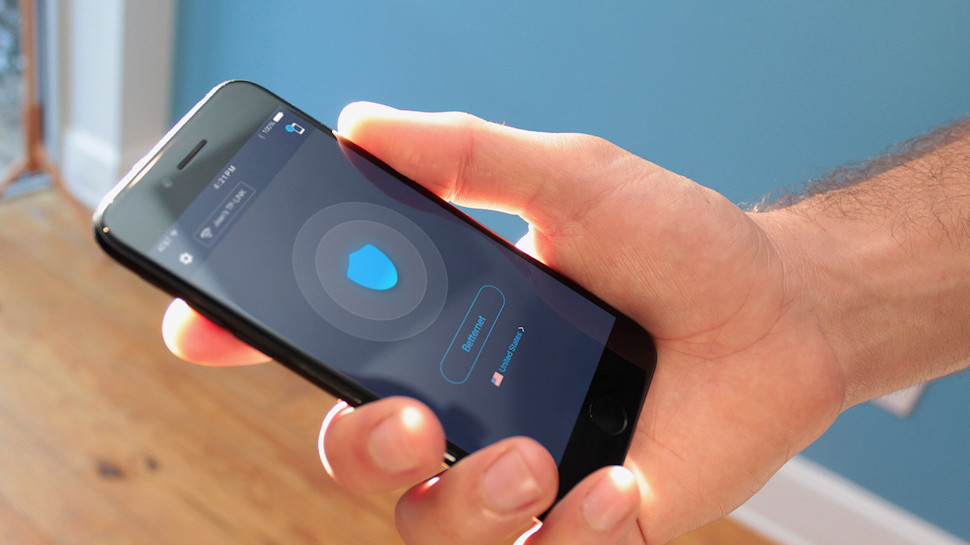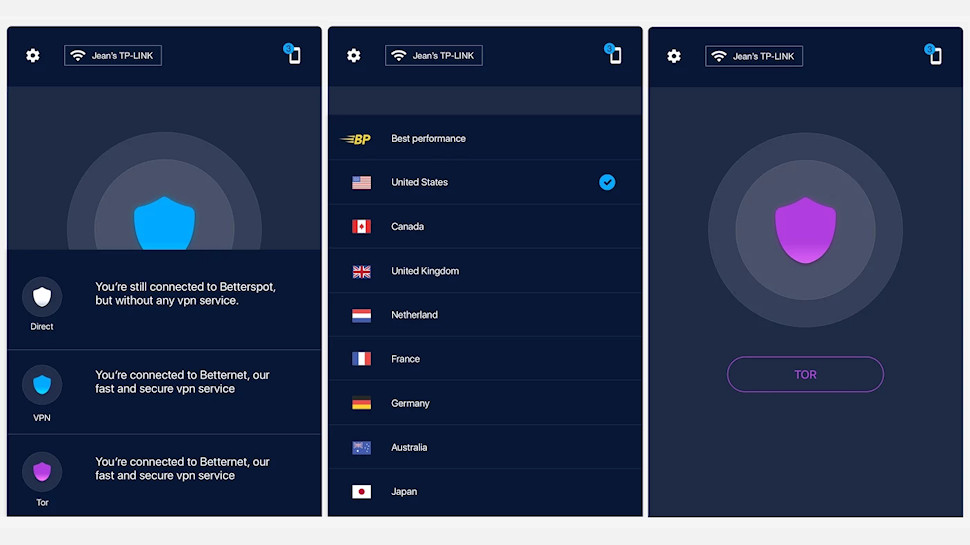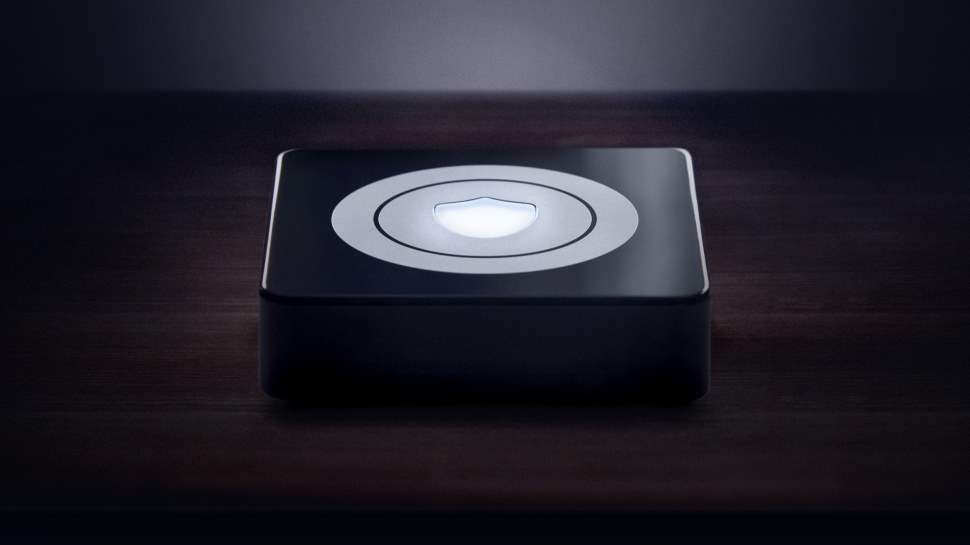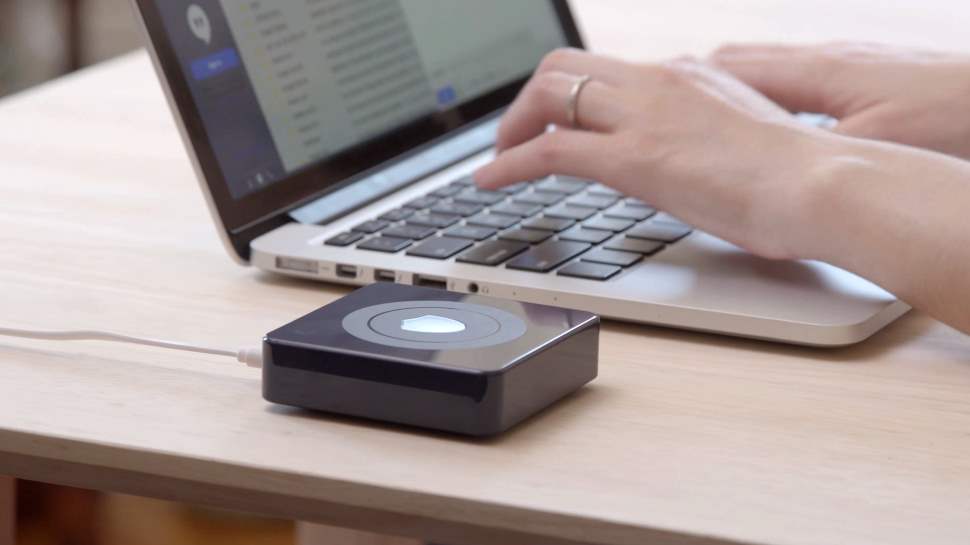Why you can trust TechRadar
Setup
Betterspot is straightforward to set up in most situations, with very few steps involved. At a minimum you would power the device via its USB cable, connect it to your router via Ethernet, and as Betterspot boots up, it grabs an IP address and configures itself as a router. (From power-on to connecting via VPN took around 30 seconds with our test unit.)
An LED light behind the shield logo highlights device status. If there is a problem, you'll see right away, as the light turns red. But if you're connected to the Betternet VPN, the colour turns – green? No, it turns blue, which doesn't seem intuitive (there is a green status, but it means 'update is available').
Once the router is showing its VPN-enabled blue, you should be able to connect to it from your device(s). It appeared in our network list as 'Betterspot 04', and we got online without difficulty using the password 'betterspot’. Not the most secure of defaults, but at least the documentation warns you to change it.
That's all you need to do, at least initially. Betterspot sets up its own VPN connection via Betternet Premium, and every device you connect to the router uses that encrypted tunnel, with no other software or special setup steps required.

Usage
Betterspot works in a simple way entirely automatically, but to get the full benefit of the router you'll want to access its settings and options. You can do this from any connected device with a browser by accessing its web interface, at admin.betterspot.com. There are also iOS and Android apps which do the same thing (connect to that address and display the results in a dedicated browser), conveniently meaning you see the same functions and interface from every device.
A simple opening screen displays the current VPN location. By default this is 'best performance', which tells Betterspot to connect to the fastest VPN server for your location (that's the closest one, probably). Click or tap this and you can choose a new VPN location from United States, Canada, United Kingdom, Switzerland and Singapore.
The website displayed many more locations, including Netherlands, France, Australia, Germany, Japan, and Hong Kong. We asked Betterspot support why these weren't accessible from our unit and were told they would be added 'gradually'. Well, okay, but if locations are advertised on the website, we expect them to be available now – not 'one day', when the company gets around to it.
The default 'VPN' router mode can be changed to connect via the Tor network in a couple of clicks. This is an alternative connection, rather than an addition – you're connecting via Tor alone, not Tor and the VPN – but it's handy to have as an option if the VPN is down, or you don't want to subscribe.
A 'Direct' router mode turns off the VPN, and enables using Betterspot as a standard router or range extender.
There are also a few advanced network settings. The most useful allow changing the network name and default password, and turning off the access point if you want to use the router by cable only. That could be handy if you're using Betterspot while travelling and don't want others to be able to see your device.

Performance
In theory, Betterspot should be simple and straightforward to use, but we found the reality could sometimes be a little different.
The router opened in a mysterious 'free' VPN mode. Was this using Betternet Free servers – and were there any time or bandwidth limits? We've no idea. The website and Betterspot support seemed to have no idea of its existence.
Subscribing was clumsy. We were sent an email with a link to authenticate our email address, but clicking the link opened a browser tab which displayed website code rather than an acknowledgement page. We asked Betterspot support if they had any explanation, and an automated response told us our question was being reviewed, but days went by with no response.
Betterspot allows payment via credit card only, with no PayPal or other options. The only way to view or manage your subscription is via the device, which seems inconvenient. What if the router won't boot, or you've given it to someone else? There's no central web console to see how much time your subscription has left, change payment method or cancel the service. The best you can do is contact support and ask for help.
After testing the service for a while, we ran into Betterspot's auto-update feature, where it detects, downloads and installs new firmware. We had no real control over this, with the router stating an update was available, asking us to press a key, then explaining we had to wait 10 or more minutes for the upgrade to complete.
You can't turn the device off until this is finished, which is potentially very inconvenient if you're using a slow internet connection while travelling. But the ability to update your firmware is still a plus, and although it took a few minutes, this worked without issue on our test device.
Moving on to the VPN service itself, we noticed that Betterspot's default 'best performance' setting connected us to a server in the Netherlands or Switzerland, even though we were in the UK. Does this mean the UK server was so slow that the Netherlands was the best option? We don't know, but this wasn't a temporary issue, as we found it was the case over two days of testing. This may not matter too much as long as you are getting the fastest server, but could lead to some unexpected issues (Google would redirect us to google.nl or google.de, for instance).
Speed tests suggested that Betterspot's free servers will never be fast, no matter which location you use. UK to UK connections gave us good response times, but download speeds were a disappointing 10-12Mbps. We’ve seen higher speeds from free VPNs, and would expect a quality commercial service to be at least two to three times as fast. Also, speeds dropped to 8-10Mbps from the Swiss server, and 5-6Mbps when connected to the US.
While there might be some questions regarding Betterspot's performance, we couldn't fault its privacy. Checks at ipleak.net and other privacy sites showed our IP address was safely masked, with no DNS, WebRTC or other leaks to give away our identity.

Final verdict
Compact and stylish, Betterspot could work well as a travel router. Plug its USB cable into your laptop and within seconds you've got a VPN-protected wireless access point that's ready for all your devices.
Ease of use is another plus, especially when it comes to Betterspot's LED. If the connection goes down you'll see that right away.
The problem is that, despite being a decent router, Betterspot's underlying VPN just isn't good enough. There are very few locations, performance is poor, and the service costs at least twice what it's actually worth.
There may still be hope. Betterspot's terms of service states that it's intended to be used with other VPN services, and if you could set the box up to use your preferred VPN, it could be much more interesting. But until then, we'd give Betterspot a miss.
- Check out the best VPN

Mike is a lead security reviewer at Future, where he stress-tests VPNs, antivirus and more to find out which services are sure to keep you safe, and which are best avoided. Mike began his career as a lead software developer in the engineering world, where his creations were used by big-name companies from Rolls Royce to British Nuclear Fuels and British Aerospace. The early PC viruses caught Mike's attention, and he developed an interest in analyzing malware, and learning the low-level technical details of how Windows and network security work under the hood.
